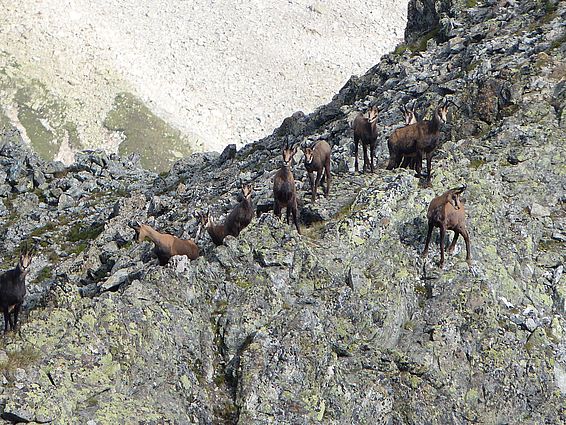04.03.2019 | Beate Kittl | News WSL
Every year on March 3rd, the Convention on International Trade in Endangered Species of Wild Fauna and Flora (CITES) draws attention to the worldwide loss of species with the World Wildlife Day. In order to protect rare or threatened species, their habitat requirements and threats must be known. At WSL, we provide the scientific basis and search for practical solutions.
In recognition of the great importance of biodiversity for humans and ecosystems, numerous states signed the Convention on International Trade in Endangered Species of Wild Fauna and Flora (CITES) on March 3rd 1973. The Secretariat is located in Geneva. CITES fights illegal trade with endangered species and protects some 5800 animal and 30,000 plant species. Since 2013, the CITES Secretariat commemorates this date awith the "World Wildlife Day".
For the year 2019 CITES has chosen the theme "Life below water: for people and planet". Millions of people depend on the creatures living in the oceans and on the coasts. The threats to the world's oceans range from overexploitation of fish stocks to marine pollution and global warming. In the Megafauna project, the team led by Loïc Pellissier, Professor of Landscape Ecology at ETH Zurich and WSL, is attempting to set up a database with the genetic fingerprints of as many large marine animals as possible, which should significantly facilitate long-term observation of the species in the future.
WSL PhD student Giulia Donati is investigating how microplastic particles in water or marine life affect endangered plankton-eating whale sharks. Her project, which she is carrying out with partners from the National University of Ireland Galway and non-governmental organisations (NGOs), is presented in a video:
Microplastics - a macro disaster ¶
A threat to the largest fish in our seas?
Other WSL projects also address the protection of certain animal and plant groups:
Red list of epiphytic and terricolous lichens ¶
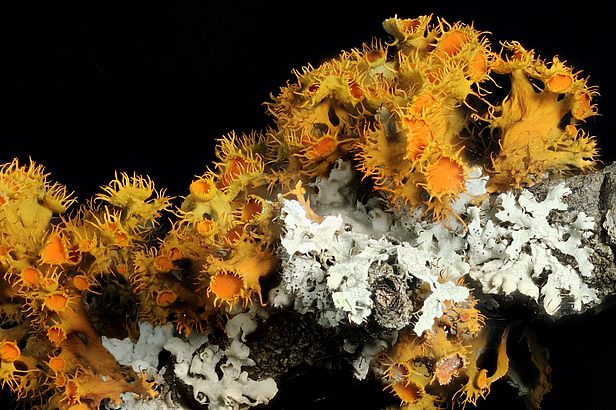
Lichens are a symbiosis of algae and fungi and valuable environmental indicators, e.g. for air pollution. More than a third of Swiss lichens are endangered - mainly because certain habitats such as dry meadows and very old forest stands are becoming increasingly rare. WSL researchers are currently updating the 2002 Red List of Endangered Species. The WSL also maintains the National Data and Information Centre for Swiss Lichens (www.swisslichens.ch), which currently records over 1600 species.
Long-term monitoring of snow hares ¶
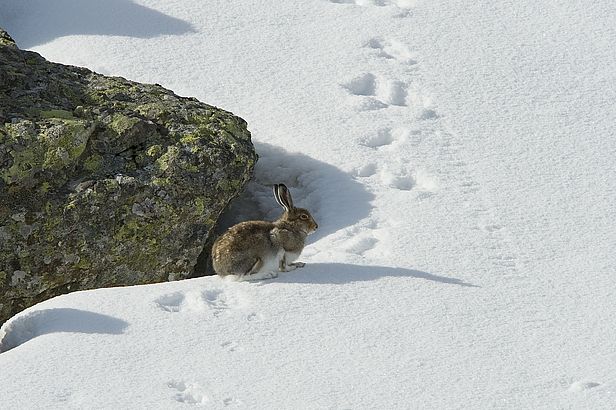
The snow hare is perfectly adapted to the harsh climate in the high mountains. This is why it is particularly affected by global warming, but also by human disturbances. For 6 years, WSL researchers have been studying a hare population in the Swiss National Park and analysing its population, survival rates and habitat use.
Recognising bat species by their calls ¶
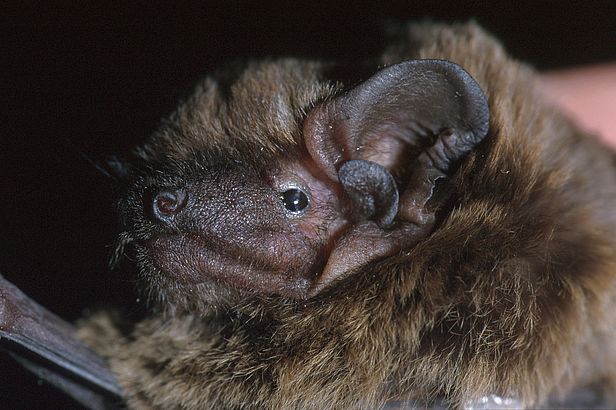
Using a method developed at WSL, bat species can be identified on the basis of their echo-locating calls. The corresponding software BatScope is freely available: www.batscope.ch. The tool can be used to better analyze the habitat requirements of bats.
Rare plants on erratic blocks ¶
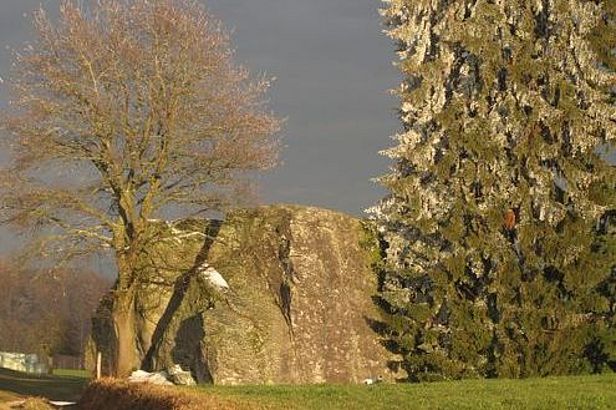
In the calcareous Swiss Plateau and Jura Mountains, many bryophyte and one fern species exclusively occur on siliceous erratic boulders. These spatially isolated plant communities are threatened by land use change and bouldering. The project aims at establishing the scientific basis for the conservation of the flora on siliceous erratic boulders.
Bat flight corridors ¶

The project aims to calculate the flight corridors of bat colonies worthy of protection throughout Switzerland so that their protection can ultimately be implemented in selected communities. In addition, suitable hunting forests of Greater mouse-eared bat will be modelled.
Identifying suitable habitats for the capercaillie ¶

The magnificent capercaillie is in great danger in Switzerland, its population has halved in 40 years. It requires near-natural, light forests, which are becoming increasingly rare, and is sensitive to disturbances caused by leisure activities. In a population model, WSL researchers have identified the most important areas in Switzerland for measures to enhance habitats.
Dimmable street lamps help bats and insects ¶

Night-time street lighting is often a deadly trap for insects. The municipalities of Urdorf and Regensdorf installed sensor-controlled street lamps in 2017, the lighting intensity of which depends on the volume of traffic. WSL researchers have found that they attract fewer nocturnal insects and bats.
The horn growth of ibexes ¶

The ibex was extinct in Switzerland at the beginning of the 20th century. Since then, the population has grown again to 18,000 individuals. The project investigates the influence of weather and climate on horn growth and thus on the fitness of male ibexes. Milder winters and good feeding conditions in spring result in above-average horn growth. (No project website, further information: Kurt Bollmann).
CITES (Convention on International Trade in Endangered Species of Wild Fauna and Flora) is a trade convention that aims to sustainably use and conserve the animal and plant populations of our world. It was signed in Washington on 3 March 1973. Today, more than 180 signatory states voluntarily control international trade in endangered species. Switzerland is the depositary state, the CITES Secretariat is in Geneva. The enforcement authority in Switzerland is the Federal Office for Food Safety and Veterinary Affairs (FSVO). It is being advised by the Federal Commission for the Protection of Species (CITES), whose president is the WSL zoologist Josef Senn.
Contact ¶
- Please find contacts to specialist topics on the respective project and topic pages.
- For questions on CITES in Switzerland, please contact Josef Senn, member of the research group "Community Ecology" at WSL and President of the Federal CITES Commission:
Links ¶
Official Website:
WSL topical websites
Copyright ¶
WSL and SLF provide the artwork for imaging of press articles relating to this media release for free. Transferring and saving the images in image databases and saving of images by third parties is not allowed.


